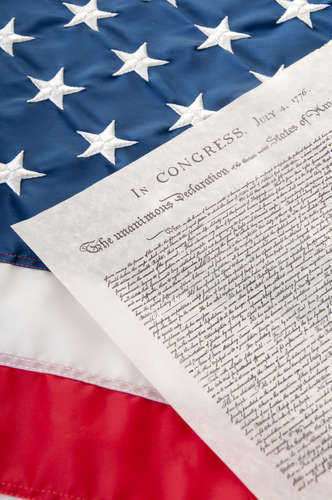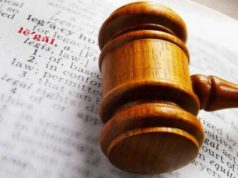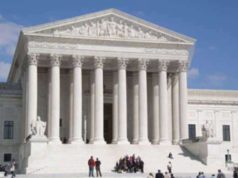Table of Contents

Article 3 of the United States Constitution: The Foundation of Individual Rights
The United States Constitution, adopted in 1787, is one of the most powerful and enduring documents in the world. With just seven articles, it established the structure of the federal government and laid out the basic principles and rights that would guide the nation for centuries to come. Article 3, specifically, focuses on the judicial branch and outlines the functions and powers of the federal courts. This article is vital to the preservation of individual rights, ensuring that the rule of law is upheld and protected throughout the country.
The Structure of the Judiciary System
Article 3 created the framework for a federal judiciary system, composed of one Supreme Court and whatever other courts Congress sees fit to establish. The Supreme Court is the highest court in the land and the ultimate authority on constitutional interpretation, which means that the Court has the power to strike down laws or government actions that it deems unconstitutional. Other federal courts include the district courts, which are the trial courts that hear most federal cases, and the circuit courts of appeals, which review decisions made by the district courts.
To ensure that the judiciary remains impartial and independent, Article 3 establishes lifetime appointment for federal judges, which means that they can only be removed from office through impeachment by Congress. This is known as “good behavior” tenure, as it ensures that judges are free from political influence and can focus solely on interpreting the law in a fair and impartial manner.
The Judicial Power of the United States
Article 3 grants the federal courts the power to hear and decide a broad range of cases, including those that involve federal laws, the Constitution, and disputes between states. This power is known as “judicial review,” and it ensures that the other two branches of government do not overstep their authority or infringe on individual rights. Judicial review has served as a powerful check on the power of the executive and legislative branches since the founding of the United States, and it continues to play a crucial role in preserving individual freedom.
One of the most important cases in the history of judicial review was Marbury v. Madison, decided by the Supreme Court in 1803. In this case, the Court established its power to declare laws unconstitutional, asserting that it was the duty of the judiciary to uphold the Constitution above all else. The ruling set a precedent that has been followed ever since, and it cemented the judiciary’s role in safeguarding the rights of citizens.
Due Process of Law
Article 3 also guarantees that all criminal defendants are entitled to a fair trial and due process of law. This means that the government must follow the law and respect the rights of accused individuals, even if they are suspected of heinous crimes. Due process encompasses a variety of legal protections, such as the right to a speedy trial, the right to an attorney, the right to a jury of one’s peers, and the protection from self-incrimination.
In recent years, due process has been the subject of much debate, particularly in light of the ongoing war on terror. Critics argue that the government has overreached its authority by detaining individuals without trial or legal counsel, and by engaging in warrantless surveillance. However, the Supreme Court has ruled on several occasions that the Constitution provides a level of protection for due process that cannot be abridged, even in the name of national security. In Hamdi v. Rumsfeld (2004), the Court held that the government could not indefinitely detain U.S. citizens without due process, and in Rasul v. Bush (2004), it ruled that detainees at Guantanamo Bay had a right to challenge their detention in federal court.
Equal Protection of the Law
Article 3 also guarantees equal protection of the law to all individuals, regardless of race, gender, or other characteristics. This means that the government must treat all citizens fairly and without discrimination, and that the courts have a duty to ensure that this principle is upheld. In modern times, issues such as affirmative action, voting rights, and marriage equality have tested the limits of the equal protection clause, and the Supreme Court has issued several landmark rulings that have expanded the reach of this principle.
For example, in Brown v. Board of Education (1954), the Court struck down racial segregation in public schools, declaring that “separate but equal” was fundamentally unequal. In Obergefell v. Hodges (2015), the Court extended the right to marry to same-sex couples, stating that the Constitution guarantees equal dignity and respect to all individuals, regardless of sexual orientation. These decisions reflect the judiciary’s role in interpreting the Constitution and upholding the principles of freedom and equality that underpin the nation.
Conclusion
Article 3 of the United States Constitution is a cornerstone of the American system of government, protecting individual rights and ensuring that the rule of law is upheld. Through its establishment of a federal judiciary system and the grant of broad judicial power, due process protections, and the guarantee of equal protection of the law, Article 3 is a critical tool for defending freedom and equality. While it has been tested throughout the country’s history, it has persevered and will continue to be a powerful force for justice in the years to come.
The first three Articles of the United States Constitution set up the Legislative, Executive, and Judicial Branches of Government that comprise the structure of the United States governing body. Article III of the Constitution deals specifically with the Judicial Branch of the United States Government, providing for the general architecture of the judicial system.
Section 1 of Article III states that there should be a sole high court, the Supreme Court, that shall have the vested judicial powers of the United States. However, it also provides for inferior courts to help with the function of the judicial system and to allow for a better structure to delegate judicial power.
It is of worthy note that the Constitution does not actually provide for an established number of judges to hold office in the Supreme Court. Article III only requires that there be only one Federal court. However, the number of Supreme Court Justices would be established later through additional statutes, setting the number at nine. There is one Chief Justice and eight Associate Justice appointed to the Supreme Court.























